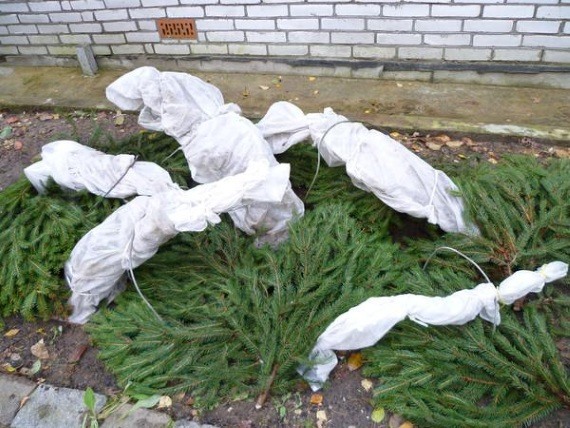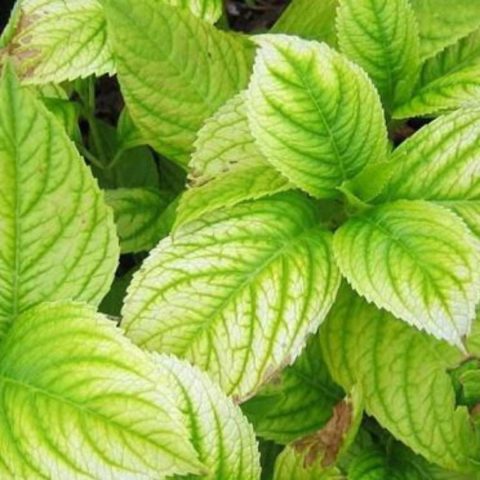Content
Hydrangea Magical Moonlight got its name due to the similarity of the colors of the blossoming buds with moonlight. This is a large and very ornamental plant with a long flowering time.

Thanks to its attractive and very impressive appearance, this crop can become a decoration for any garden plot.
Description of the hydrangea variety Magical Moonlight
Hydrangea paniculata of this species has the following official variety name: Hydrangea Paniculata Magical Moonlight. This plant is a perennial shrub up to 2-2.5 m high. Its crown, consisting of large buds, can have a diameter of up to 1.2 m. The shoots are thin and long, their foliage is high.

Large hydrangea Magical Moonlight buds are located on long shoots of the current year, their length reaches 20-35 cm
The shape of the buds is voluminous and oblong.When blooming, they reach a diameter of 10-15 cm. It is difficult to find a plant that can exist in a northern climate and has such large inflorescences.
The growing season of Magical Moonlight hydrangea begins in mid-April. The flowering period extends from May to August, but inflorescences often bloom in September.
Hydrangea specimens kept in the shade retain a creamy-greenish tint. Those exposed to the sun turn white or pink.
Hydrangea MagicalMoonlight in landscape design
The height of the Magical Moonlight hydrangea bush is more than two meters. At the same time, the crown, which has a diameter of about 1.2 m, is densely dotted with large flowers, which are renewed regularly and do not disappear almost throughout the summer. Such a representative of the flora simply could not help but interest garden designers.
As an element of landscape design, Magical Moonlight hydrangea can be used as:
- hedge filler;
- free-standing plant;
- the central part of a complex flower arrangement (for example, a flower bed).

An additional advantage of the variety is its ability to change the color of the inflorescences not only depending on the light, but also on the season: by autumn, most of the flowers will have a pinkish tint
For those for whom natural colors are not enough, an alternative method is offered to change the shade of Magical Moonlight hydrangea. The color change occurs when the plant is watered with various dyes; it is fashionable to purchase them in specialized stores.
To obtain the special colors of the Magical Moonlight hydrangea, more complex compositions are used.For example, to give the petals a blue color, water with admixtures of aluminum or iron salts is used; a pink tint is obtained by adding peat and potassium permanganate to water for irrigation, etc.
Winter hardiness of hydrangea Magical Moonlight
The plant has good frost resistance. When covered, it can withstand cold temperatures down to -29 °C. The winter hardiness of uncovered branches is significantly lower, but they are also able to withstand negative temperatures (up to -5-8 °C).
Planting and caring for hydrangea Magical Moonlight
Caring for the Magical Moonlight hydrangea is simple and unpretentious; it consists of regular watering and fertilizing of the plant, as well as pruning branches twice a season. In cold regions, the plant should be prepared for wintering.
Selection and preparation of a landing site
When choosing a place to plant Magical Moonlight, you should proceed from the fact that it does not like open sunny areas, but if you plant the bush in the shade, its color will remain greenish. In this case, the color will practically not change over time. Therefore, a half solution is used - Magical Moonlight hydrangea seedlings are planted in partial shade with equal intervals of illumination and shading.
The soil should be slightly acidic, loose and, if possible, moist. For planting, three-year-old Magical Moonlight hydrangea seedlings are used.

It is advisable to protect the area from strong gusts of wind
Landing rules
Hydrangea Magical Moonlight is planted in spring or autumn. The first option is more preferable, since the plant takes root relatively quickly and does not need a rest period.A month before planting, dig up the soil and add compost to it.
The size of the holes depends on the degree of development of the equine system. It should fit completely into them without overlaps or twisting. When planting several hydrangeas, leave a distance of at least 2 m between them, otherwise the crowns will interfere with each other.

Often the seed can be sold as a young plant in a pot
After covering the roots of the Magical Moonlight hydrangea with soil, it is thoroughly compacted and watered with 10-12 liters of water. The tree trunk circle should be mulched with an acidic nutrient mixture. The ideal option would be to use peat for this purpose. The thickness of the mulch layer is at least 7 cm.
Watering and fertilizing
After planting, young plants are watered daily for the first month. In the future, the frequency of watering is reduced, but their volumes remain the same. The frequency of watering depends on the properties of the soil. The main rule: the top layer should not remain dry. If mulching is not carried out, the soil should be loosened to a depth of at least 5 cm.
Usually two fertilizers are used for Magical Moonlight hydrangea:
- Spring is a stimulator of vegetation. At this time, add urea (20 g per 10 liters of water) in the amount of 1 bucket for a young plant and 2 buckets for an adult. Fertilizing is applied during the budding period.
- Summer is used for spectacular flowering. In this case, a mixture of superphosphate, urea and potassium sulfate is used. All components are taken in an amount of 30 g and dissolved in 1 bucket of water. This volume is completely poured under 1 bush.
Sometimes a third feeding is used, carried out in late autumn.Organic fertilizer in the form of rotted manure or compost is placed under the plant. This is a standard feeding “under the snow” to provide the bush with nutrients in early spring.
How to prune Hydrangea paniculata Majik Moonlight
Pruning the plant is relatively simple, but should be done regularly. This procedure is carried out in the off-season; it includes two stages:
- In autumn: removal of dry inflorescences and shoots of this year.
- In spring: removing frozen, damaged and diseased branches, thinning out old ones.
In fact, autumn pruning of Magical Moonlight hydrangea is stimulating, and spring pruning consists of sanitary and formative ones.
Preparing for winter
Without shelter, the variety in question can withstand temperatures of no more than 5-8 °C. If the garden plot is located in the southern temperate climate zone, it is possible that the Magical Moonlight hydrangea shelter will not be needed.
In cases where more severe weather conditions are likely in winter, the Magical Moonlight hydrangea needs to be taken care of by protecting it from the cold. Insulation occurs in a horizontal plane. In this case, you need to do the following:
- A deck is built close to the bush. This can be any structure made of fallen leaves, straw or spruce branches.
- The branches that have undergone autumn pruning are laid on the prepared flooring.
- A cushion consisting of straw or pine needles is placed on top of the branches. To protect against rain and other types of external moisture, the top layer is covered with polyethylene.
- The entire shelter is additionally covered with burlap on top. And when the first snow falls, another layer of thermal insulation 20-30 cm thick is formed from it.

The use of foliage as a pillow is not recommended due to the fact that they may contain pathogens of bacterial and fungal infections.
Reproduction
To propagate hydrangea, you can use both seed and vegetative methods. Usually, varietal varieties are not grown using the latter. With this method of propagation, the plant takes a relatively long time to form, blooms later, and, although it has greater endurance, is less attractive in appearance. And the main purpose of the seed method is to obtain new varieties.
That is why gardeners have completely switched to the vegetative method. For Magical Moonlight hydrangea, any of the existing methods is acceptable. Cuttings are the most popular. It is relatively simple and fast.
At the beginning of May, cuttings 10-15 cm long are cut. They should have at least 2 buds. Then the nutrient substrate is prepared. It consists of river sand and peat in equal proportions. In some cases, crushed sphagnum moss is added to the substrate.

Cuttings pre-moistened in Kornevin are installed in the substrate and sent to a cool, shaded place.
The first roots appear after 20 days, after which the plant is transplanted to a permanent location.
You can use layering by bending a long hydrangea branch to the ground, securing it with a fastener and covering it with soil. At the end of the season, when the root system is formed, the daughter plant is separated from the mother plant and replanted.
But the easiest way to propagate Magical Moonlight hydrangea is by dividing the bush. Everything is simple here: in spring or autumn, the plant is completely dug up and divided into several parts using a knife.The main condition: each plot must have at least three buds.
Diseases and pests
The plant has above average resistance to diseases and pests, but even despite this, you should not let your guard down.
The most common problems that can affect Magical Moonlight are:
- Spider mite. It is difficult to notice because it mainly sits on the underside of the leaf. In addition, its size is small. To combat it, spraying with Thiophos is used.
A symptom of the appearance of this bug is yellowing and drying of the foliage.
- Downy mildew appears on the stem and leaves. In these places, yellow areas appear, which turn black and dry out over time.
If hydrangea is affected by this or any other fungus, the branches should be treated with a solution of soap and water and copper sulfate
- Chlorosis is possible only if the plant has been overfed with organic matter and nitrogen. It is recommended to water the Magical Moonlight hydrangea with potassium nitrate (no more than 2 times), and after a few days - with a solution of copper sulfate.
Chlorosis is characterized by loss of leaf pigmentation.
- Aphid can be easily defeated by spraying with Anabasine.
Aphids are one of the most dangerous pests that multiply quickly
Conclusion
Hydrangea Magical Moonlight is a beautiful large size flower that is highly decorative. They can be used in the garden in any way convenient for the gardener, the result will always be positive, since the exterior of the plant deserves all praise. Unpretentiousness in maintenance conditions and ease of care make Magical Moonlight a species that can be recommended for growing by novice gardeners.












